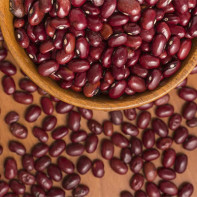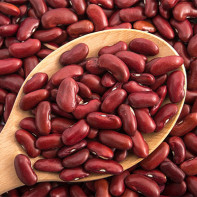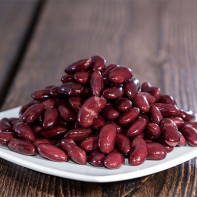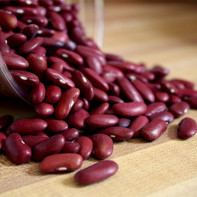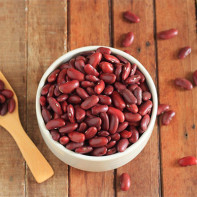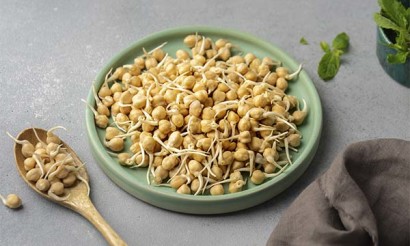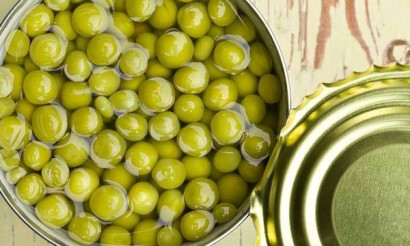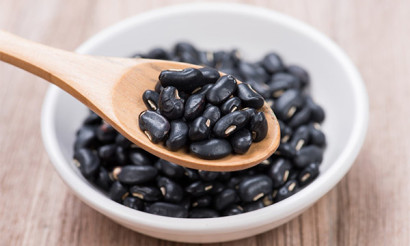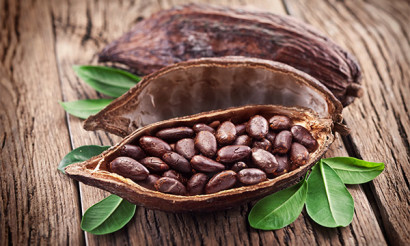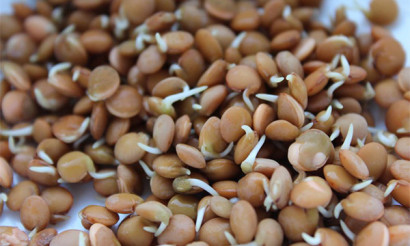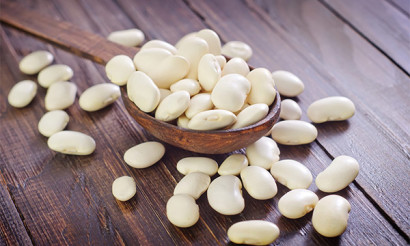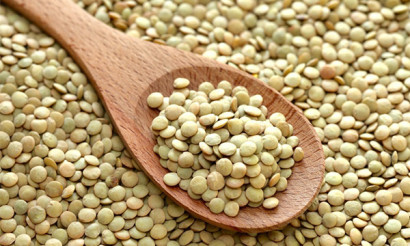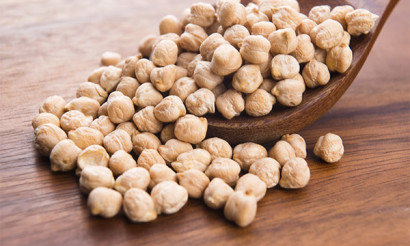Red beans: useful properties and recipes for cooking
Legumes are considered a valuable dietary food: they are rich in vegetable protein, while not as fatty as nuts. Therefore, they are used to maintain and satiate the body, even with weight loss and active sports. Red beans stand out against their counterparts for their enormous benefits for the cardiovascular, sexual, and nerve health systems. Read on for the benefits and best recipes with red beans - everything you wanted to know.
- Composition of red beans
- Calories and nutritional value
- Types of red beans
- Useful properties of red beans
- General Benefit
- For Women
- For Men
- For Children
- Slimming
- While pregnant
- Breastfeeding
- Red beans in medicine
- In pancreatitis
- Diabetes mellitus
- Gastrointestinal diseases
- If urolithiasis
- Traditional Medicine Recipes for Red Beans
- Cosmetic Applications of Red Beans
- What can be cooked from Red Beans
- Red Beans for a Diet
- Hearty snacks with beans
- Cold dishes with beans
- Fresh Salads with Boiled Red Beans
- Selection and storage of red beans
- Hazards and contraindications
- Interesting facts about beans
Composition of red beans
Crimson beans are high in iron and copper in their composition, which ensures the health of the blood and the overall strengthening of the body. Therefore, the product is often recommended to be introduced into the diet after a long cold, anemia, blood loss, low weight and a number of other ailments.
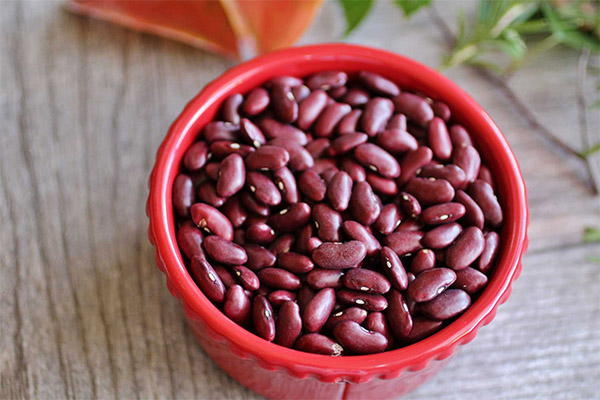
Beans also contain:
- Magnesium is an extremely important component for the health of the nervous system. Its consumption provides recovery from stress and emotional turmoil, stimulates clear thinking and memory, speed of switching and other reactions, in addition, it participates in metabolism.
- Potassium is one of the main elements that support healthy heart function, as well as stimulating renal activity. It helps to eliminate excess fluid from the body.
- Calcium, which supports healthy bones and normal blood pressure.
- Phosphorus, necessary for nervous processes, which strengthens bones and teeth.
- Iodine - an essential regulator of the thyroid gland, which affects the hormonal balance, well-being and metabolism.
- Sulfur, which helps to combat intoxications and infections, providing disinfecting and anti-inflammatory effects. It also gets rid of dandruff, scaling and dermatitis, actively fighting fungal diseases.
- Zinc ensures a healthy metabolism, cleanses the skin and promotes male hormones.
Among the vitamins found in beans are:
- Carotene, essential for healing and repair processes as well as maintaining visual acuity.
- B vitamins that support immunity and nervous system health, including folic acid, essential for balancing hormones.
- Vitamins E, K, C, eliminating toxins, ensuring the health of cells and blood.
In addition, beans contain an important compound for diabetics - arginine. It is a substance that helps to break down sugar and maintain its normal level in the blood, reducing the necessary dose of insulin.
Beans act as an antioxidant, helping to cleanse the body and bring a supply of beneficial substances for renewal, so they give a rejuvenating effect. Beans are recommended to eat from an early age, and especially for adults, during pregnancy, during sports and colds to speed up the recovery processes.
Calories and Nutritional Value
Ripe beans are stored dried or canned. Its caloric value is up to 300 kcal per 100 grams, but cooked boiled beans bring only 90-120 kcal. This is a medium-calorie product that can replace heavier animal proteins and supplement the diet for cereal allergies.
In terms of nutritional value, beans contain about 8 g of protein, 15 g of carbohydrates and only 0.5 g of fat. 7 g of dietary fiber and the rest is water. The product does not contain cholesterol and can completely replace meat and fish components in the diet, so beans are used:
- during Lent;
- on a vegetarian diet;
- on diets for cardiovascular diseases;
- on sports diets and for weight loss;
- In children's diets and for the elderly.
Consumption of beans helps to keep a feeling of fullness for 6-8 hours, which is very useful for people with irregular working hours, when hiking, with intense physical activity and a period of intense growth for children.
It is enough to eat up to 800 grams of beans per week, adding them both to hot first and second courses and to cold snacks. Beans are best digested in the morning and afternoon, providing a nutritious breakfast and a hearty lunch. Eating beans at night is undesirable: proteins are digested for about 6 hours, and this should happen in the period of vigor.
It is necessary to eat not more than 200 grams of beans per day for women and 250-300 grams for men. In old age, the consumption should be reduced by 2-3 times and monitor whether the body can cope with the legume components.
Red bean varieties
During the cultivation of the vegetable all over the planet more than 100 varieties of beans have been bred, which differ in taste, nutritional value and the presence of certain elements in its composition. Red beans are generally stable in terms of their nutritional content, so it is not necessary to look for specific varieties at all: each of them will be valuable to the body.
The variety of beans is more important for gardeners who seek to plant early-ripening and yielding varieties.
- Common red beans are characterized by fairly large fruits and ripen in 2 months. The harvest volume is up to 2.5 kg per square.
- Shokoladnitsa is a very tasty and tender large bean, which ripens for 100 days and gives up to 3.5 kg of harvest per square meter.
- The Red Riding Hood bean is a bicolor type that yields about 3 kg of dense, well-stored beans. It takes more than 3 months to mature.
- There is also the Mexican Pinto variety, which is a tasty yellow bean with streaks. It produces a smaller yield but has a fuller flavor.
Red bean varieties are among the dry beans that must be husked. Their pods are coarser than sweet beans and should not be eaten. But the beans themselves are always rich in protein and starch. Properly cooked beans are cooked into a soft and tender puree, which becomes a very light and delicious snack.
Usually red beans have denser membranes, so they need to be soaked well before boiling. But red bean cores are used for medicinal infusions, to treat the heart and urogenital system. The outer rind of the fruit contains a high concentration of protective substances, providing the effect of disinfecting and relieving inflammation.
Useful properties of red beans
General benefits
Rich in vitamins and trace elements, beans can be considered a complete basic meal in the diet, providing the body with all the necessary amino acids and useful compounds.
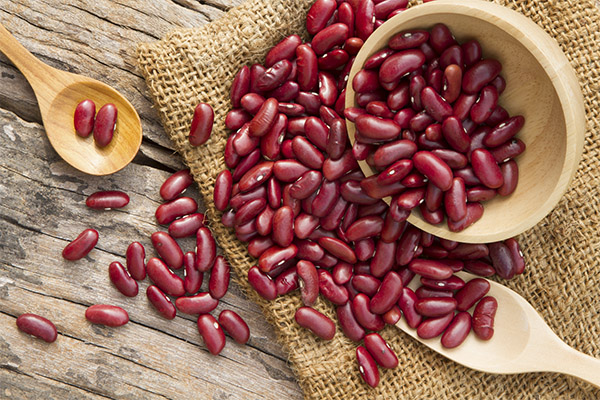
It completely replaces the meat, fish and egg products in the diet of vegetarians, during fasting and diets. It helps to relieve the body considerably, because it takes less energy to digest the beans. Beans are easy to digest and help burn excess fat. Among the valuable properties of red beans are:
- Comprehensive cleansing of the body, stimulation of kidney function and removal of excess fluid, getting rid of toxins.
- Stimulation of the heart, strengthen muscle tissue and vessel walls, increase skin elasticity and accelerate regeneration processes.
- Antioxidant and rejuvenating effect, normalization of metabolic processes, control of appetite and hormonal balance.
- Strengthening of the nervous system, normalization of the sleep cycle, getting rid of chronic fatigue and depression, increased anxiety and inhibition of degenerative disorders.
- Participation in hematopoiesis, increasing red blood cell count.
- Formation of a healthy immune system and increase the body's defenses.
- Anti-inflammatory effect, especially against the pelvic organs: the excretory and genital systems - the prevention of male diseases.
- Reducing cholesterol and blood sugar levels, and normalizing blood pressure.
- Treatment of skin diseases, including fungal and bacterial, eliminating dandruff and otomycosis.
- Supporting the body in the treatment of infertility.
The main are considered to be the properties of beans to saturate the blood, to protect the cardiovascular system, as well as a natural sedative effect. Therefore, it is indispensable in the diet in late autumn, with the onset of cold weather, and in spring after a long winter stress. It helps to strengthen the body and replenish nutrients, in addition, saves from stressful overeating, satiating for the day and discouraging cravings for sweets.
For Women
Women greatly appreciate the rejuvenating properties of chickpeas. It is able to cleanse the skin from rashes, normalize the complexion, remove traces of fatigue. In addition, lift the mood, stabilize the emotional background, increase libido, relieve tension. This is especially true during the critical days and after menopause.
Also red beans stimulate fertility and increase the chances of pregnancy in people with problems in this area. Beans not only protect against inflammation and normalize the production of hormones, but also prepare a woman's body to carry a fetus by providing folic acid.
Beans promote easy weight loss, increase the body's tone and endurance, so they are useful for gym and fitness training. Beans quickly satisfy hunger and allow you not to think about snacking, thanks to this it becomes easier not only to lose weight but also to get rid of bad habits.
For men
For the stronger sex beans can help protect themselves from heart disease and reduce the risk of heart attack or the development of atherosclerosis. They are also good for preventing impotence and prostate diseases. The zinc in beans promotes the production of healthy seminal fluid and enough testosterone. Calcium, iron and vitamins help increase potency and sexual stamina.
For athletes, beans help maintain a normal water balance in the body, sweat easily and replenish salt content. The components of the red bean product increase stamina during strength training and help you recover faster.
Teenagers beans in the diet will help to go through the transition period and restructuring in the body to get rid of acne and hyperexcitability, will contribute to the formation of muscle mass.
For kids
Since ripe beans are quite dense product, and legume proteins sometimes cause allergic reactions, children's body accustomed to the new component should be gradual and watch for rashes and intestinal disorders.
Beans are introduced after 2 years. While the baby is not eating by itself, it should be mashed and added to the main dishes by the spoonful. Over time, the portion can be increased. Beans are not given at the same time with animal proteins: meat, eggs - or cereals, porridge. Give your child beans can be 2-3 times a week.
At preschool and school age children are offered full portions of "meat substitute", but no more than 3 times a week, alternating with other foods. If a child eagerly eats beans and asks for them more often, it is worth checking the baby for magnesium or iron deficiency and supplementing the diet with greens: broccoli, spinach, nuts. Anemia can feed a child beans regularly, for example, 5 times a week, until the iron level rises. After sure to make a break.
A lot of beans in children's diets should not be: its components can irritate the stomach, and children's mucosa is very sensitive. In addition, at a child's age, proteins and calcium from plant foods must necessarily be supplemented with dairy products and alternate with them.
When losing weight
The reason to lose a few pounds can be not only a desire to slim down, but also medical conditions. For example, with diabetes or heart disease, excessive weight significantly overloads the body. Here comes to the rescue beans, which can completely replace cholesterol-containing products: meat, eggs, oils.
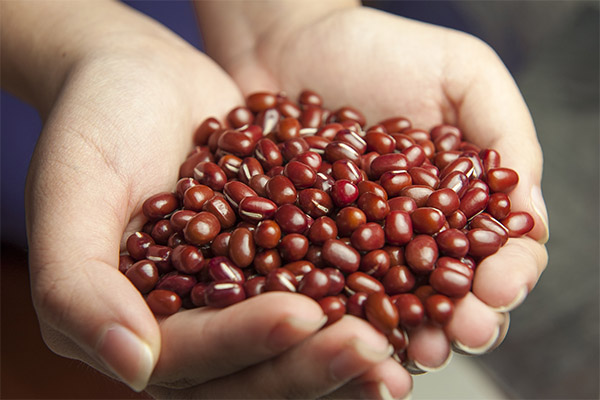
Due to the content of dietary fiber, beans cleanse the intestines and eliminate toxins, which improves the absorption of useful substances, the normalization of the metabolism and well-being. On the bean diet at first you can feel discomfort while the body will be cleansed and rebuilt. However, after 3-5 days you can feel lightness, increased stamina and performance, strengthening the nervous system and stabilization of internal processes: regular stools, normal appetite, fast sleep, reduced cravings for sweets, nicotine and alcohol.
Since bean protein can irritate the stomach, in a diet diet it is best to combine it with a lot of light fiber: cabbage, cucumbers, zucchini, apples. Also fast digestion is promoted by plenty of warm drinks.
Beans should not be combined with aggressive acidic juices, so as not to provoke attacks of pancreatitis, gastritis and heartburn. That is why beans are not combined with grapefruit, pomegranate, and cherries.
If there is a lot of activity, physical exertion or frequent colds in life, the use of beans can be increased, but with low activity the product will not help to burn fat, but only help to establish digestion and keep longer without snacking.
It is important to dress beans with oil, on the diet for this better suit the delicate nut and grain types: sesame, hemp, flax, pumpkin.
Periodically, you need to take breaks, eliminating legumes from the diet to let the body wean itself off their effects. Nevertheless, beans can be introduced into the regular menu. Thanks to such a component, it is much easier to come out of stiff diets, so that extra pounds do not return.
When pregnant
Women who are expecting a child, beans in the diet are necessary. It will maintain normal hemoglobin levels, immunity and body strength, contribute to the proper formation of the skeleton and internal organs of the baby. Regular consumption of beans before pregnancy in the first trimester will saturate the body with folic acid, which is important for the proper development of the child's nervous system.
With beans in the diet, the woman will be less fatigued and feel calmer. But overeating this product is not allowed. Excessive consumption can cause not only constipation and unwanted diuretic effect, but also allergic reactions.
When breastfeeding.
Rich in calcium, phosphorus and iron, red beans significantly improve the quality of milk, but you need to use it carefully, because the baby can start constipation, or so-called colic. You can try to introduce it into your diet 1 month after childbirth. During lactation, it is advisable to reduce the consumption of the product to 1-2 times a week and carefully monitor the baby's reaction.
Red beans in medicine
Cardiologists recommend to include beans in their diet for heart disease, and endocrinologists offer this product for atherosclerosis and diabetes. Beans rather quickly normalize the blood composition, remove cholesterol and bring down sugar, eliminating the sharp spikes in its level. Also, the product is necessarily included in the diet for anemia and after severe diseases to restore the body.
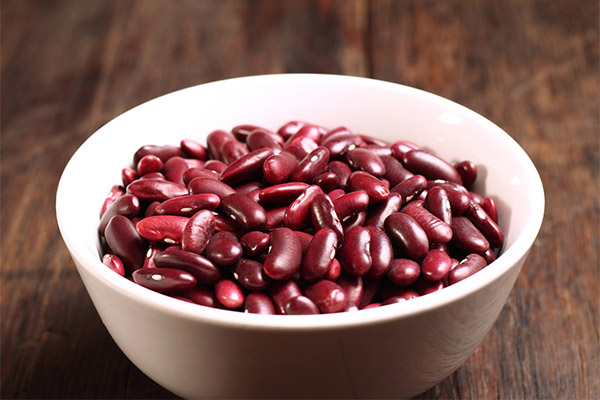
In pancreatitis
You should not get addicted to the product in pancreatitis. Some complex proteins of beans can provoke a worsening of the disease, so before introducing it into the diet, it is advisable to consult a doctor. Because this disease often occurs in people of advanced age, doctors recommend that they refrain from frequent consumption of legumes. Nevertheless, an infusion of bean sprouts can have a positive effect on the body.
For diabetes
Beans are rich in the valuable compound arginine, which acts similarly to insulin. When you eat dishes with red beans, sugar levels are reduced by almost half and insulin doses can be reduced.
Among other things, beans control appetite and hunger and promote weight loss, which will be relevant for people suffering from obesity due to diabetes. Vitamins A, E and other substances help to improve vision and skin health, which often suffer in neglected forms of the disease.
Beans are prepared not only as a main dish, but also as a dessert, which will help diabetics to replace unhealthy foods without denying themselves a treat.
Important: The glycemic index of red beans is 35 units. The highest GI of canned beans - 74 units.
Gastrointestinal diseases
If there is damage to the gastrointestinal tract, doctors usually prohibit the use of beans. The components of the product can provoke the exacerbation of chronic ailments and throw off the acid-alkaline balance, so before introducing beans into the diet, it is necessary to consult with a doctor in each individual case.
If you have urolithiasis.
While beans give a diuretic effect and help to remove excess water from the body, as well as relieves inflammation, it is not worth using them without discussing with your doctor. Conditions such as gout, nephritis, cystitis, do not tolerate high levels of uric acid, and beans contain compounds that stimulate its formation.
Red bean-based folk medicine recipes
Folk medicine offers quite a few recipes based on the beneficial properties of red beans. The therapeutic effect possesses both dried bean capsules and brewed flowers, fruits. They save for gastritis and pancreatitis, edema and bronchitis, arthritis and diabetes, kidney and bladder stones.
- Pancreatitis. In the chronic course is recommended to take the juice of green beans in the milk ripeness stage. Half a tablespoon of honey is added to half a glass of juice and taken 3 times a day.
- Diabetes mellitus. In type 2 diabetes use steamed red bean pods containing glucokinin. 3 tablespoons of ground dried leaves steeped in a thermos with 2 cups of boiling water for 6 hours. Take a tablespoon half an hour before a meal.
- Urolithiasis. Decoction of the flowers of red beans are used to remove gallstones from the gall bladder and kidney. 20 g of flowers boiled in a glass of boiling water for 10 minutes and take half a cup up to 4 times a day.
- Wound healing. Ground into flour red beans have healing properties. It is combined with water in a ratio of 1:1 and add a little honey. The resulting pellet is applied to burns, diaphragms, eczema. Such a compress has antibacterial action and drying effect inflammation.
Applications of red beans in cosmetology
From bean pods make infusions that strengthen the structure of hair and nails, as well as increase skin elasticity. Rinsing the hair with this conditioner and using a facial tonic protects the epidermis from the negative effects of the environment, helps to eliminate acne marks and relieve irritation, while masks of bean pulp nourish the skin and curls, relieve peeling and dandruff, reduce inflammatory reactions and help retain moisture.
Beans are a kind of "rejuvenating apple" that protects against wrinkles, sagging and tired-looking skin. They improve complexion and make the skin look fresh by speeding up cell regeneration. The product is more suitable for dry and normal skin, as well as age-related facial changes.
What can be cooked with red beans
Red beans are a unique raw material that can be used to prepare cold and hot dishes, side dishes, first course dressings, pie fillings and even desserts. On our tables most often you can find dishes of Caucasian cuisine based on beans. They are quite hearty and at the same time light. For example, you can cook beans with cilantro and garlic in a vinegar-oil sauce - it will be a great snack for summer low-calorie salads, and when going on a barbecue will replace meat vegans.

Red beans for dieting
- For a light vegetable snack, you can stew boiled beans with celery and broccoli, adding spices: leeks, coriander, cilantro, garlic. You can spice the dish with crushed walnuts: walnut or pine nut. This side dish is good both hot and cold.
- There is a great recipe for spicy beans. For this, the boiled product is stewed with bell peppers, onions, hot peppers and tomato paste. You can serve this dish with rye or white bran tortillas.
- For a hearty breakfast, the beans are stewed with corn and carrots. Garlic and soy sauce can be added. On diets, this dish is served with lean rice, and in the normal diet, the porridge can be stewed in oil, along with vegetables.
Hearty snacks with beans
There is a very interesting recipe for a fish dish with red beans. Ready beans are marinated with onions (you can choose a red variety) and add salted herring slices. The dish can be sprinkled with your favorite herbs.
Some people like red beans with mushrooms. For this, oyster mushrooms or other mushrooms are fried in oil, put the beans in the pan, add the onions at the end, so that they do not have time to turn golden, and rosemary. A little lemon juice can be added before serving.
First dishes with beans
It is red beans usually replace or supplement the meat component in the lean soup or soups with smoked meat. You can also make bean soup. For this, chicken broth is added to the bean broth (this is optional), some potatoes, fried onions, sweet peppers and parsnips. The soup turns out light and hearty.
To make a delicious cream soup, boiled beans are mixed with basil, garlic, carrots and butter. Another option is with spinach and tomatoes.
Fresh salads with boiled red beans
The product is a great addition to green salads. For example, it can be added instead of mushrooms or olives in the "Greek" preparation. Tasty salad with beans, Peking cabbage, lettuce and apple.
Another option:
- Tomatoes.
- Red onions.
- Dark boiled beans.
- Spinach and other greens.
In "heavy" appetizers, beans are put in a "Chinese" salad of pickled carrots, eggs, chicken fillets and onions, which is dressed with mayonnaise.
Mashed beans with garlic and spices can be crumbled in breadcrumbs and fried vegetable cutlets, which replace the meat. They are eaten with side dishes and in appetizers with pita bread and fresh vegetables.
To make a dessert with beans, they are stewed in a pot of cream with sugar and cloves. The dish may include raisins, apricots, prunes and nuts. There is also an exotic recipe with oranges. For this, beans are stewed in syrup with citrus juice and pulp.
Vegetable stew with beans or pickled beans can be closed for the winter: homemade preserves more useful components than factory preserves. You can make and half-finished product - pickled beans, which in winter can be added to any dish. Do so most often when there are their own fresh beans from the beds, so as not to dry them.
Choosing and storing red beans
Red beans in the kitchen, as a rule, bought in dry form. When choosing, you should pay attention to the condition of the beans:
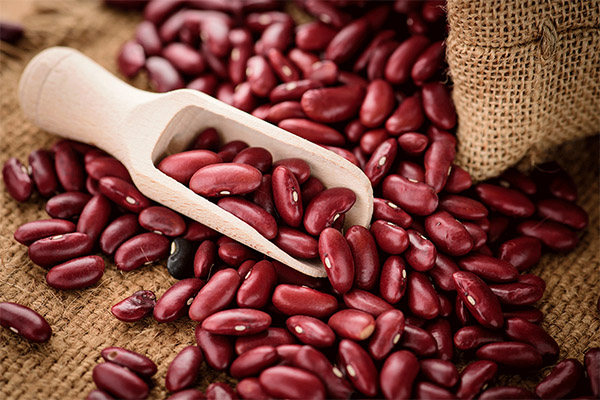
- they should not be shriveled and overdried;
- the presence of damage and breaks is excluded;
- Kernels should be the same size, without any coating or evaporation;
- Dry beans are odorless.
Different varieties can be stored in a common container at room temperature. Preferably choose glass or ceramic containers - jars with lids. You can also keep beans in bags, provided there is no excess moisture in the room.
Harms and contraindications
Some varieties of beans can cause allergies (in cases of individual intolerance). Therefore, if you notice discomfort in the intestines, heartburn, itching, general malaise, you need to give up the product. Sometimes excessive gassing occurs in the body due to toxins. Moderate consumption usually does not cause any discomfort.
In some cases, beans can provoke constipation or indigestion. Then you can try softer varieties or the green version in pods. Overeating beans can lead to impaired absorption of some useful substances and irritation of the mucous membranes and a feeling of heaviness. Protein is not stored in the body, so it is not recommended to eat more than the norm.
Avoid the product is advised to avoid diseases of the kidneys and the gastrointestinal tract in both acute and chronic stages, as well as those who are prone to deposits of salts in the joints. Careful and rationed should eat beans for the elderly, children and pregnant women.
Interesting Facts about Beans
- Beans have been found on all continents of the world; they were loved by Indians, Chinese, Indians, as well as the northern peoples of Africa. Even back then, different varieties of beans were common, some of which were distinguished by their high sugar content and were consumed as dessert.
- Beans are used not only as an independent product, but also as a moisture-retaining agent and weighting agent in baking cakes. The legume filling allows you to form the desired shape of the crust.
- Raw fruits contain the poisonous substance phenazine, which is toxic to the human body. This component disintegrates with prolonged heat treatment. That's why the beans should be boiled for at least 45 minutes, but it's better to soak them beforehand. This will not only speed up the preparation of beans, but also remove excess starch in the water, making the kernels softer.
Beans can be found in almost all cuisines of the world and remain a favorite vegetable on many tables. If you like to dine on a hearty snack of red beans, do so bravely, knowing the benefits of the nutritious fruit.
«Important: All information on this site is provided for informational purposes only. for educational purposes only. Consult a health care professional before applying any recommendations. specialist. Neither the editors nor the authors shall be liable for any possible harm caused by materials."


